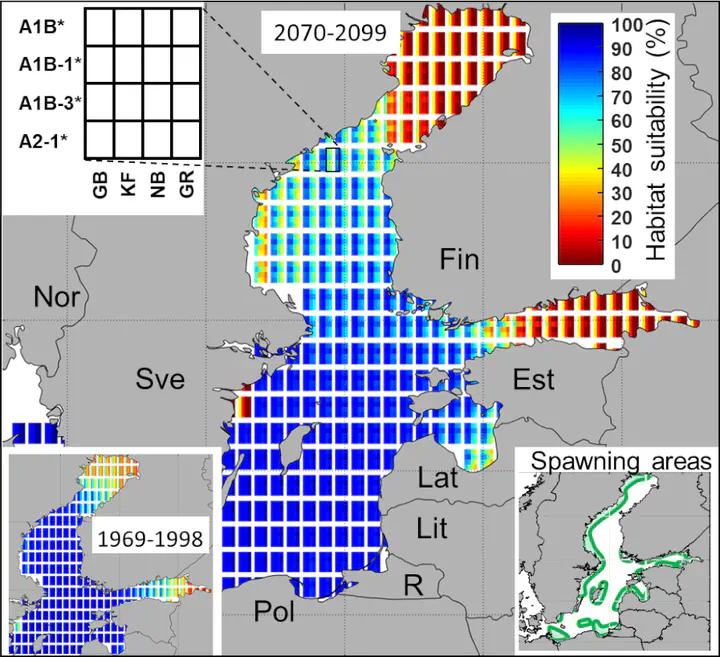 Baltic Sea regions suitable for survival of Atlantic herring larvae at present and predicted salinities. Image credit: Marc Hufnagl
Baltic Sea regions suitable for survival of Atlantic herring larvae at present and predicted salinities. Image credit: Marc Hufnagl
Abstract
Projected, climate-driven changes in rainfall patterns are expected to alter the salinity (S) of estuaries and larger brackish water bodies, such as the Baltic Sea. Some marine fish larvae are potentially more sensitive to low salinity than older stages, hence we compared the low salinity tolerance of Atlantic herring (Clupea harengus) larvae at the individual and population levels including four populations in the North and Baltic Seas. Acute low salinity tolerance was similar (S = 1.9–2.7) across populations and increased with increasing body size. Based on this physiological threshold and a regionally down-scaled climate model, spawning habitats in the northern and eastern Baltic Sea are projected to be largely unsuitable for herring by 2100. Although adaptive mechanisms may attenuate the effect in some species, the limited physiological tolerance of fish larvae will remain an important bottleneck for the persistence of marine fish populations in brackish waters undergoing climate-driven freshening.